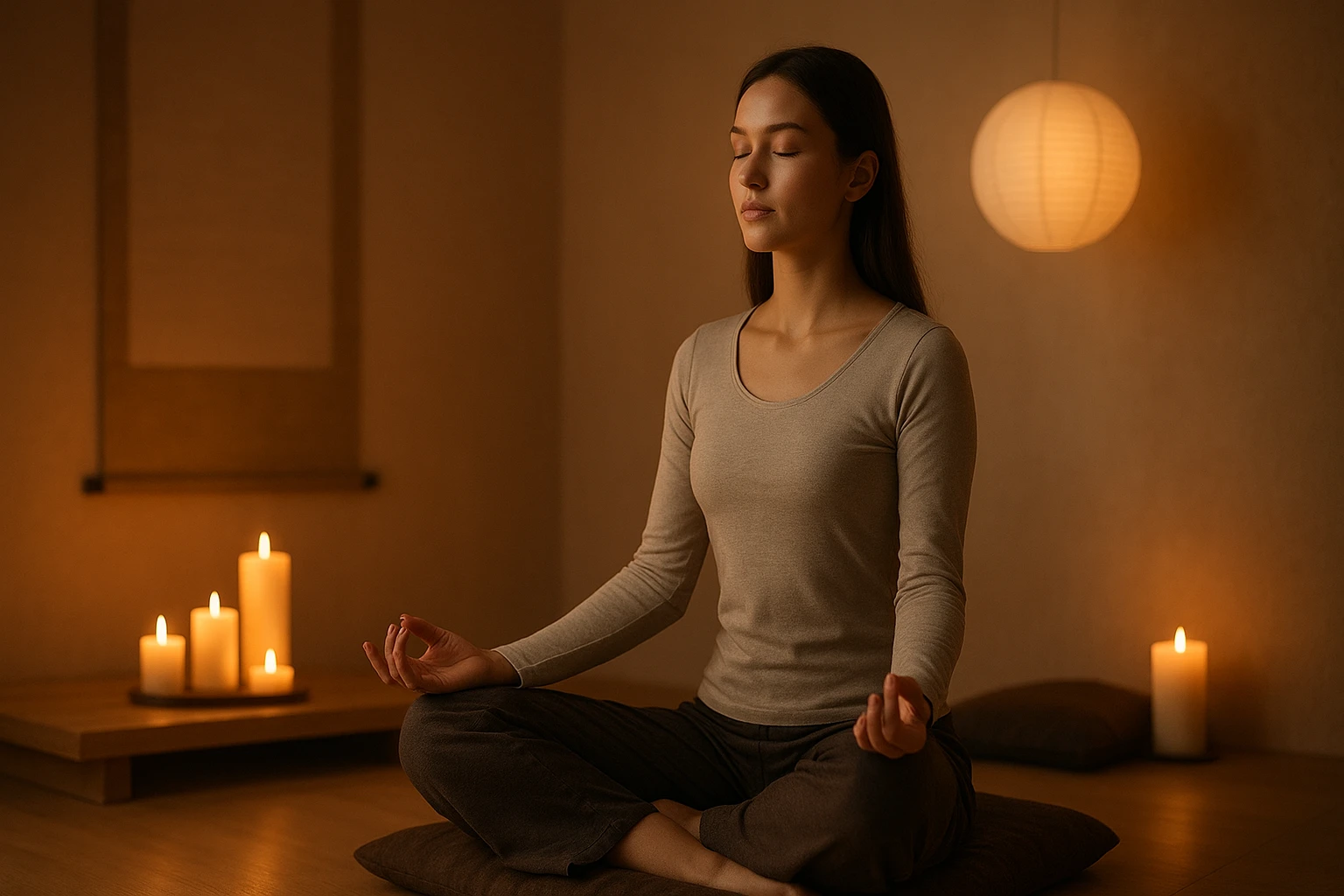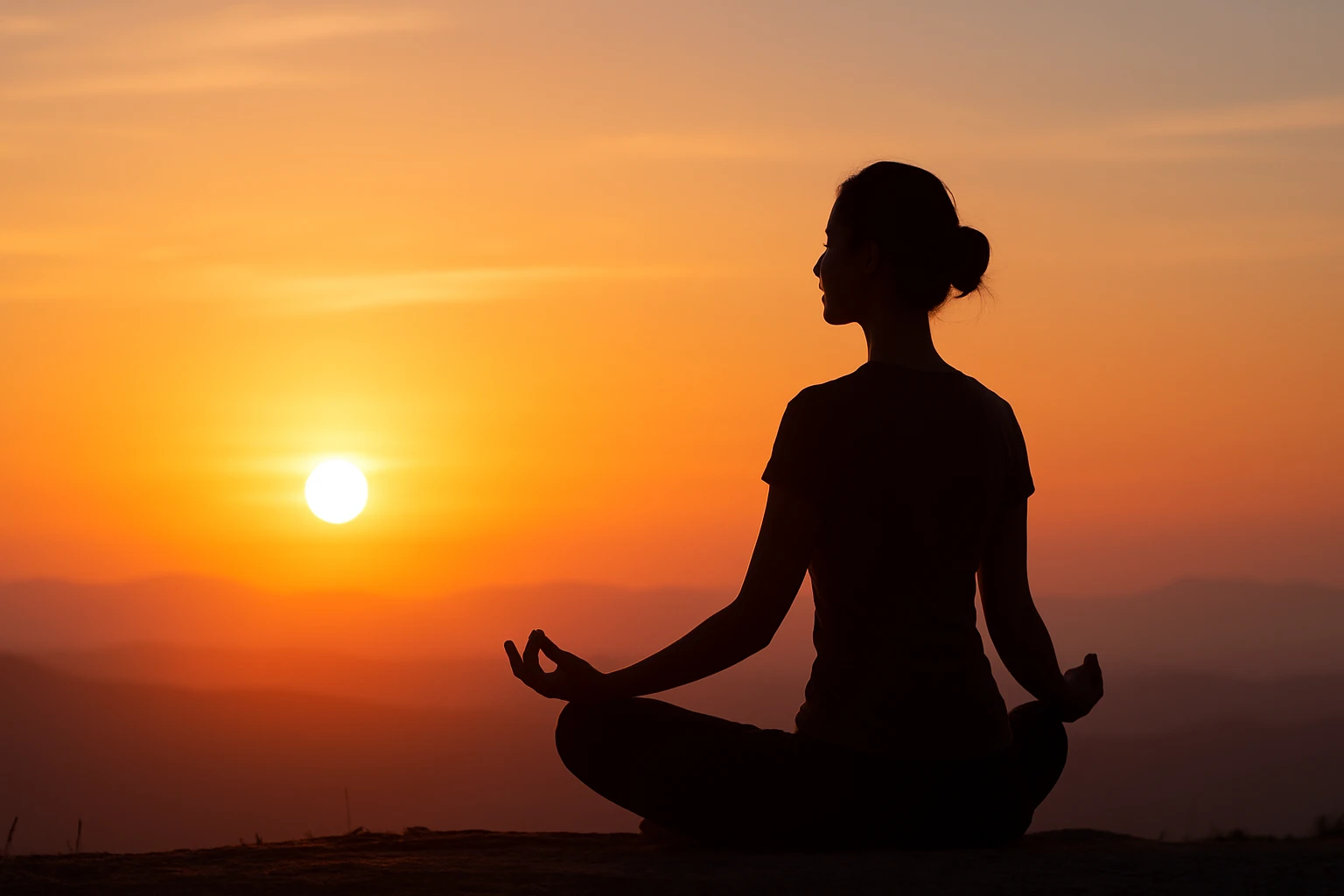
The Ultimate Guide to Meditation: Unlocking Inner Peace & Spiritual Growth
September 30, 2025

The Ultimate Guide to Meditation: Unlocking Inner Peace & Spiritual Growth
September 30, 2025
Meditation has captivated the human spirit for thousands of years, serving as a bridge between the outer world and the inner self. It’s more than just sitting quietly with closed eyes—it’s a journey of awareness, self-discovery, and transformation. From ancient monasteries in Tibet to modern wellness studios in New York, meditation has taken many forms, each offering unique pathways to peace and clarity.
But why is meditation still relevant in today’s world? The answer is simple: modern life is chaotic, noisy, and overwhelming. Meditation provides a timeless solution—helping us return to balance, heal from stress, and unlock our highest potential.
Recent neuroscience studies reveal that meditation physically changes the brain. Regular practice increases gray matter in the hippocampus (responsible for learning and memory) and reduces activity in the amygdala (the brain’s fear center). This means meditators handle stress better and think more clearly.
Relaxation calms the body, but meditation transforms the mind. While relaxation is temporary, meditation rewires thought patterns, offering long-lasting peace and resilience.

Now let’s dive into the most powerful forms of meditation, each with its unique essence and benefits.
This method uses silent mantra repetition to settle the mind into pure awareness. Practiced 20 minutes twice daily, it’s known for reducing stress and improving clarity.
Originating from Japan, Zen meditation involves sitting upright, focusing on the breath, and observing thoughts without attachment. It emphasizes simplicity and awareness of the present.
Tibetan monks practice meditations involving deities, mandalas, and sacred chants. These practices cultivate compassion and spiritual awakening.
This meditation awakens the dormant energy at the base of the spine, known as kundalini, through breathing, movement, and chanting. It’s transformative but should be practiced with guidance.
Tantric meditation focuses on balancing masculine and feminine energies, often involving breathwork, visualization, and mantra recitation.
Repeating a sacred word or phrase (such as Om) helps silence mental chatter and create spiritual vibration.
Rooted in Islamic mysticism, Sufi meditation uses rhythmic breathing, chanting (dhikr), and movement to reach states of divine love and union.
This popular method trains the mind to observe the present moment without judgment—perfect for reducing anxiety and cultivating self-awareness.
Pranayama involves structured breathing techniques that balance the body’s energy channels, preparing the mind for deeper meditation.
Made popular by Paramahansa Yogananda, Kriya meditation uses controlled breathing to accelerate spiritual evolution and inner peace.
Using singing bowls, gongs, or chanting, sound meditation harnesses vibrations to heal the body and calm the mind.
This dynamic practice uses specific breathing patterns to release emotional blockages and enhance vitality.
A teacher guides practitioners through vivid mental imagery, often to relax, heal, or manifest goals.
Chakra meditation focuses on the body’s seven energy centers, using sound, visualization, and breath to restore harmony.
This deep relaxation technique guides the mind into a state between wakefulness and sleep, helping release stress and trauma.
Before diving into meditation, setting up a calm environment is key. Choose a quiet space, free from distractions. Light a candle, play soft instrumental music, or use incense if it helps you focus. A meditation cushion or yoga mat can also enhance comfort.
Meditation lowers cortisol levels (the stress hormone), making it an effective natural remedy for anxiety. Even a short 10-minute mindfulness session can shift your mood dramatically.
Practices like Yoga Nidra and guided visualization prepare the nervous system for deep rest. They’re excellent for insomnia and restless sleep patterns.
Top CEOs, athletes, and creatives use meditation to sharpen focus. Mindfulness and breathwork techniques enhance decision-making and creativity.
Meditation is central to Hinduism and Buddhism, with techniques like Vipassana, Zen, and Transcendental Meditation rooted in these traditions.
Sufi orders use chanting (dhikr) and breath practices to experience divine love. This meditative devotion has been practiced for centuries.
Christian monks have long used contemplative prayer as a form of meditation, while Jewish mysticism includes Kabbalistic meditations on divine names and symbols.
1. How long should I meditate each day? Beginners can start with 5–10 minutes daily. With practice, increasing to 20–30 minutes brings deeper benefits.
2. Can meditation replace sleep? While Yoga Nidra provides profound rest, meditation does not replace sleep. Instead, it improves sleep quality.
3. Is meditation religious? No, meditation can be spiritual or secular. While many religions use it, anyone can practice it for mental and physical benefits.
4. How soon will I notice benefits from meditation? Some people feel calmer after one session, while others notice benefits after consistent practice for a few weeks.
5. Do I need a teacher to meditate? Not necessarily. Apps, books, and online resources can help. However, advanced practices like Kundalini or Kriya are best learned from an experienced teacher.
6. Can children practice meditation? Yes! Simple mindfulness exercises are great for kids, helping them focus and manage emotions.
Meditation is more than a practice—it’s a way of life. Whether you choose mindfulness meditation for stress, Kundalini to awaken energy, or Yoga Nidra for deep relaxation, each method has the power to transform your mind, body, and spirit.
In today’s fast-paced world, meditation isn’t a luxury—it’s a necessity. By starting small, staying consistent, and exploring the rich variety of meditation techniques, you can unlock inner peace, sharpen your focus, and deepen your spiritual connection.
🌿 Your meditation journey begins with a single breath.
©2025 Soul Sister. All Rights Reserved. Web Design & Development by The Web Addicts.
We use cookies